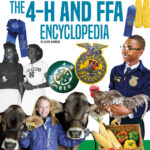In recent years, a troubling trend has emerged in our society: an alarming rise in incidents of animal cruelty. This surge prompts a profound and troubling inquiry into the cultural underpinnings that allow such behavior to proliferate. By unraveling the intricacies of this issue, we can better comprehend the systemic factors at play and challenge the prevailing notions that contribute to cruelty against innocent beings.
At the outset, it is crucial to dissect the confluence of elements that have led to this insidious upsurge. Societal norms and attitudes towards animals have shifted dramatically over time. Previously seen merely as commodities or resources, animals have gained recognition as sentient beings. Yet, despite this awareness, the dissonance between societal values and actions remains palpable. The juxtaposition of advocacy for animal rights alongside escalating incidents of brutality presents a paradox that demands careful exploration.
One of the most salient factors influencing this rise in animal cruelty is the pervasive desensitization that emanates from modern technology. In an age dominated by social media and instant gratification, the virtual sphere has become saturated with depictions of violence—whether in video games, movies, or online content. This constant exposure can dull the emotional responses that individuals may otherwise feel towards suffering animals. The more one witnesses cruelty, albeit through a screen, the more it becomes normalized. A person can scroll past horrifying images or videos without much thought or empathy, fostering an environment where violent behavior seems acceptable or even trivial.
Moreover, the cultural disassociation between humans and animals, exacerbated by industrialized practices, plays a significant role in perpetuating cruelty. With the majority of the population living in urban environments, the profound connection to nature—and by extension, to animals—has waned. Many individuals now exist in a bubble, detached from the realities of animal husbandry, factory farming, and the impactful choices surrounding animal welfare. Such disconnection breeds ignorance about the plight of animals, leading to inaction or passive complicity in cruel practices. The invisible suffering of animals becomes obscured, allowing cruelty to persist unchecked.
Education, or rather the lack thereof, is another critical element contributing to this crisis. While academic institutions have made strides in addressing animal welfare, comprehensive education on humane treatment and the ethical considerations surrounding animal interactions remain insufficient. Cultivating empathy for animals is not merely an adjunct to education; it must be a core component, encompassing emotional intelligence and ethical reasoning. Without this foundational understanding, individuals are less likely to recognize the repercussions of their actions or advocate for animal rights.
Furthermore, socio-economic factors cannot be overlooked. In underprivileged communities, economic hardship often translates to desperation. When resources are scant, animals may become collateral damage. Individuals struggling to provide for their families may inadvertently neglect or mistreat their pets—a heartbreaking reflection of a system that fails to support both humans and animals alike. Additionally, systemic abuse, whether perpetrated by individuals or institutions, generates a culture of cruelty that normalizes violence against animals. The cycle is self-perpetuating; those who are victims of violence or neglect may, in turn, inflict harm on other vulnerable beings.
Society’s reliance on hierarchical structures, wherein certain species are regarded as superior to others, also plays a crucial role in the escalation of animal cruelty. The entrenched belief that humans hold dominion over animals fosters a mindset that permits exploitation. Animals are often viewed as tools for entertainment, experimentation, or profit, with their well-being relegated to a secondary concern. This speciesism not only condones but often celebrates acts of violence against non-human beings, creating a chasm of empathy and fostering a culture that commodifies life itself.
Despite the grim outlook, there is a glimmer of hope—a burgeoning movement to challenge and reform these deeply held beliefs and practices. Animal advocacy organizations, grassroots campaigns, and an ever-vocal segment of the population are rallying for change. They are igniting conversations that compel individuals to reassess their relationship with animals and the implications of that relationship. The rise of veganism and cruelty-free products is part of a larger trend reflecting a growing awareness and demand for conscious consumerism. Every choice made—whether it concerns food, clothing, or entertainment—serves as a powerful statement for what society values.
In conclusion, the rise in animal cruelty reflects a complex interplay of cultural, technological, and socio-economic factors that have coalesced into a concerning phenomenon. To counteract this tide, society must cultivate empathy, challenge harmful norms, and embrace education that prioritizes animal welfare. Each individual possesses the power to effect change through their choices and actions, heralding a new era where compassion overrides cruelty. The question remains: will society choose to walk the path of enlightenment, or will it continue to tread the dark paths of indifference? The stance we take today will undoubtedly shape the reality for countless animals in the future, making it imperative that we seek a holistic understanding of this urgent issue.






